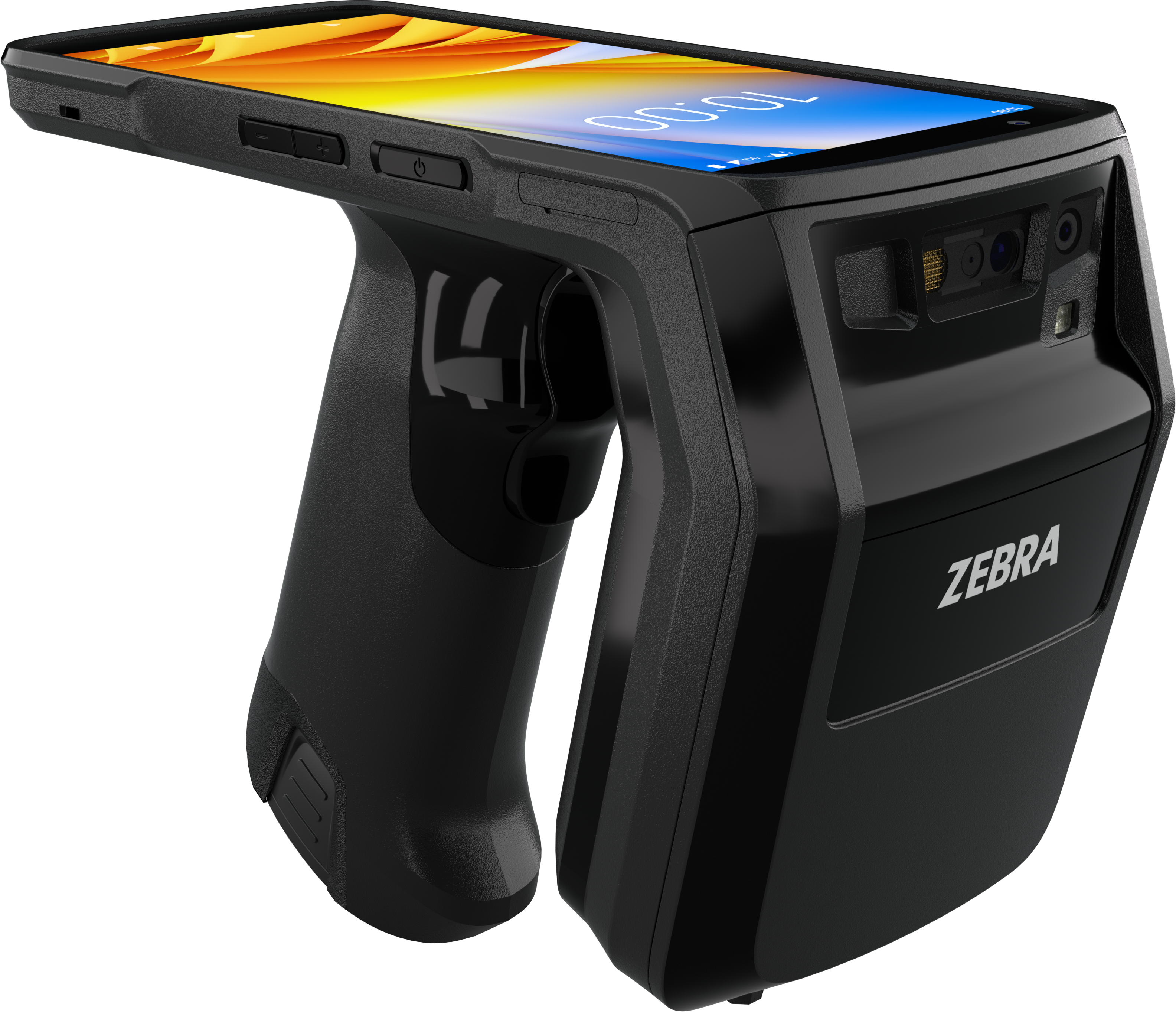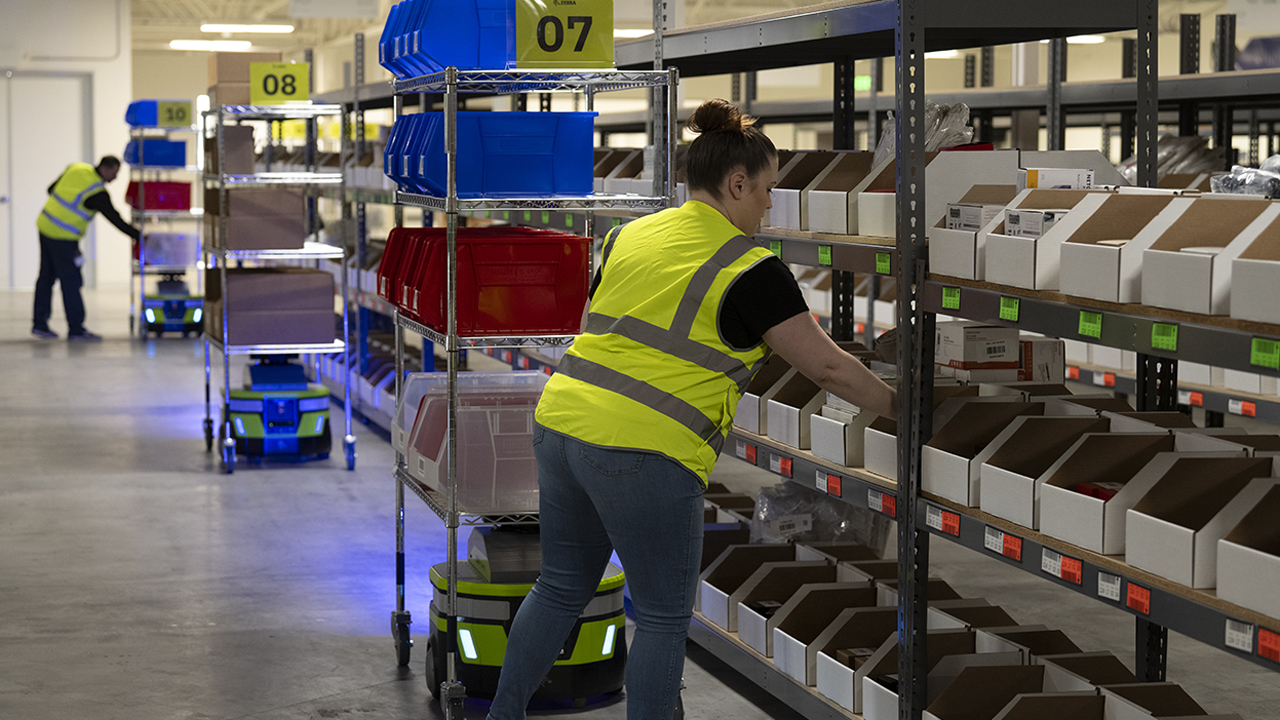Transform retail operations with Zebra’s retail technology solutions, featuring hardware and software for improving inventory management and empowering teams.
Streamline operations with Zebra’s healthcare technology solutions, featuring hardware and software to improve staff collaboration and optimise workflows.
Enhance processes with Zebra’s manufacturing technology solutions, featuring hardware and software for automation, data analysis, and factory connectivity.
Zebra’s transportation and logistics technology solutions feature hardware and software for enhancing route planning, visibility, and automating processes.
Zebra's public sector technology solutions enhance decision-making, streamline operations, and safeguard communities with advanced software and rugged hardware.
Zebra's hospitality technology solutions equip your hotel and restaurant staff to deliver superior customer and guest service through inventory tracking and more.
Zebra's market-leading solutions and products improve customer satisfaction with a lower cost per interaction by keeping service representatives connected with colleagues, customers, management and the tools they use to satisfy customers across the supply chain.
Empower your field workers with purpose-driven mobile technology solutions to help them capture and share critical data in any environment.
Zebra's range of mobile computers equip your workforce with the devices they need from handhelds and tablets to wearables and vehicle-mounted computers.
Zebra's desktop, mobile, industrial, and portable printers for barcode labels, receipts, RFID tags and cards give you smarter ways to track and manage assets.
Zebra's 1D and 2D corded and cordless barcode scanners anticipate any scanning challenge in a variety of environments, whether retail, healthcare, T&L or manufacturing.
Zebra's extensive range of RAIN RFID readers, antennas, and printers give you consistent and accurate tracking.
Choose Zebra's reliable barcode, RFID and card supplies carefully selected to ensure high performance, print quality, durability and readability.
Zebra's rugged tablets and 2-in-1 laptops are thin and lightweight, yet rugged to work wherever you do on familiar and easy-to-use Windows or Android OS.
With Zebra's family of fixed industrial scanners and machine vision technologies, you can tailor your solutions to your environment and applications.
Zebra’s line of kiosks can meet any self-service or digital signage need, from checking prices and stock on an in-aisle store kiosk to fully-featured kiosks that can be deployed on the wall, counter, desktop or floor in a retail store, hotel, airport check-in gate, physician’s office, local government office and more.
Adapt to market shifts, enhance worker productivity and secure long-term growth with AMRs. Deploy, redeploy and optimize autonomous mobile robots with ease.
Discover Zebra’s range of accessories from chargers, communication cables to cases to help you customise your mobile device for optimal efficiency.
Zebra's environmental sensors monitor temperature-sensitive products, offering data insights on environmental conditions across industry applications.
Zebra's location technologies provide real-time tracking for your organisation to better manage and optimise your critical assets and create more efficient workflows.
Enhance frontline operations with Zebra’s AI software solutions, which optimize workflows, streamline processes, and simplify tasks for improved business outcomes.
Empower your frontline with Zebra Companion AI, offering instant, tailored insights and support to streamline operations and enhance productivity.
The everything you need to rapidly and cost effectively develop high-performance AI vision applications on Zebra mobile computers.
Zebra Workcloud, enterprise software solutions boost efficiency, cut costs, improve inventory management, simplify communication and optimize resources.
Keep labour costs low, your talent happy and your organisation compliant. Create an agile operation that can navigate unexpected schedule changes and customer demand to drive sales, satisfy customers and improve your bottom line.
Drive successful enterprise collaboration with prioritized task notifications and improved communication capabilities for easier team collaboration.
Get full visibility of your inventory and automatically pinpoint leaks across all channels.
Reduce uncertainty when you anticipate market volatility. Predict, plan and stay agile to align inventory with shifting demand.
Drive down costs while driving up employee, security, and network performance with software designed to enhance Zebra's wireless infrastructure and mobile solutions.
Explore Zebra’s printer software to integrate, manage and monitor printers easily, maximising IT resources and minimising down time.
Make the most of every stage of your scanning journey from deployment to optimisation. Zebra's barcode scanner software lets you keep devices current and adapt them to your business needs for a stronger ROI across the full lifecycle.
RFID development, demonstration and production software and utilities help you build and manage your RFID deployments more efficiently.
RFID development, demonstration and production software and utilities help you build and manage your RFID deployments more efficiently.
Zebra DNA is the industry’s broadest suite of enterprise software that delivers an ideal experience for all during the entire lifetime of every Zebra device.
Advance your digital transformation and execute your strategic plans with the help of the right location and tracking technology.
Boost warehouse and manufacturing operations with Symmetry, an AMR software for fleet management of Autonomous Mobile Robots and streamlined automation workflows.
The Zebra Aurora suite of machine vision software enables users to solve their track-and-trace, vision inspection and industrial automation needs.
Zebra Aurora Focus brings a new level of simplicity to controlling enterprise-wide manufacturing and logistics automation solutions. With this powerful interface, it’s easy to set up, deploy and run Zebra’s Fixed Industrial Scanners and Machine Vision Smart Cameras, eliminating the need for different tools and reducing training and deployment time.
Aurora Imaging Library™, formerly Matrox Imaging Library, machine-vision software development kit (SDK) has a deep collection of tools for image capture, processing, analysis, annotation, display, and archiving. Code-level customisation starts here.
Aurora Design Assistant™, formerly Matrox Design Assistant, integrated development environment (IDE) is a flowchart-based platform for building machine vision applications, with templates to speed up development and bring solutions online quicker.
Designed for experienced programmers proficient in vision applications, Aurora Vision Library provides the same sophisticated functionality as our Aurora Vision Studio software but presented in programming language.
Aurora Vision Studio, an image processing software for machine & computer vision engineers, allows quick creation, integration & monitoring of powerful OEM vision applications.
Adding innovative tech is critical to your success, but it can be complex and disruptive. Professional Services help you accelerate adoption, and maximise productivity without affecting your workflows, business processes and finances.
Zebra's Managed Service delivers worry-free device management to ensure ultimate uptime for your Zebra Mobile Computers and Printers via dedicated experts.
Find ways you can contact Zebra Technologies’ Support, including Email and Chat, ask a technical question or initiate a Repair Request.
Zebra's Circular Economy Program helps you manage today’s challenges and plan for tomorrow with smart solutions that are good for your budget and the environment.

Is There an Advantage to Moving Machine Vision Systems to the Cloud?
That depends on how you want to use your system and who you want to be able to operate and maintain it.
“How do you see AI and cloud technologies having an impact on computer vision and machine vision?”
I was recently asked this question on an episode of the Industrial Automation Insider podcast.
I immediately called out the need to look closer at cloud-based training of the AI models that serve as the decision engines within these automation systems.
Why haven’t more manufacturers, warehouse operators, or healthcare providers jumped on this opportunity? They’re all using machine vision systems in various ways, often across multiple sites that are geographically distant from one another.
As discussed in a Forbes Tech Council article, when you move the training of deep learning neural networks or other AI to the cloud:
· You don’t need someone with a PhD in optics on site, or at every site, to install a camera.
· You can democratize machine vision in a way that benefits the entire workforce and the people you serve through your business.
Why the delay?
Well, as the podcast host later called out (off the air), there will likely be resistance or hesitancy to move vision systems – or at least the training of such systems – to the cloud for a few reasons:
· Overcoming the fear of change is as difficult as overcoming the fear of failure.
· There are fears of job loss if the project results in cost overruns or fails to deliver anticipated cost savings – to include potential labor cost savings.
· Sometimes what you’ve got in place already is good enough.
That begs the question: How do you know if you should move to a vision system that would allow for cloud-based training of deep learning AI models? Is there a certain set of conditions in which it’s lower risk to move to the cloud than it is to stay on-premises?
Start by answering these questions:
· Do you have several manufacturing lines in different factories around the world that produce similar goods? Or perhaps several locations at which surgical tools are being sanitized and packaged for reuse?
· Are your computer vision or machine vision applications challenging to the point where on-premises training models would be prohibitive? Would it be impossible to use a rules-based traditional programming model? (For example, searching for scratches on an object, which have zero uniformity.)
· Do you want to simplify the deployment of your existing machine vision or computer vision systems?
If you said yes to any of the above, strong consideration should be given to cloud-based AI training.
A Word of Caution as You Move to the Cloud
I’ve seen many manufacturers underestimate the complexity of deep learning AI models, especially those used to train machine vision systems. I’ve also seen them miscalculate the cost, but only because the high “cost” of using deep learning AI comes from not fully understanding how it works.
The scariest thing that I hear is this:
“Oh, I'm so interested in deep learning. I'm going to go get an intern for the summer and annotate all my 275 SKUs.”
That is not a good way to start.
You need the expertise of quality control people who have seen these parts for years and years, as they know what is good and what is not good.
You also need data scientists who can help you really understand how you need to model this and what kind of percentage of good parts versus bad parts you want to have in your training set.
Additionally, you need a data scientist who generates synthetical images based on the few defects that you have.
If you have that understanding, that knowledge, then your ability to create models and to scale is very high.
If you don't, then you'll fail, and everything will be very, very difficult.
So, it’s very important to understand the value of entry.
Many people think that this can be done very quickly and very easily because it’s AI. They think it doesn’t cost any money. That’s part of the reason why 80% of people struggle to deploy deep learning AI in their machine vision systems. Those things simply aren’t true.
The other reason why people struggle with deep learning AI: they try to start with a very complex problem. Many say, “Let's revolutionize our factory and be 100% AI based.” Yet, all they need to do is find scratches or holes in products coming down the line.
So, if you decide to use deep learning AI in your machine vision or computer vision system and opt to train it via the cloud:
Build the system one use case at a time.
Find one problem that you want to solve that is very specific – that is easy to describe and contain.
Make sure you can measure the output of it. (If you’re using the deep learning AI machine vision system for quality control, you can usually measure pretty well.)
Then build a team. That doesn’t mean you must hire a team. Simply work with partners and suppliers who can come in and help you out so that you start gaining confidence in this.
Zebra Developer Blog
Zebra Developer BlogZebra Developer Blog
Are you a Zebra Developer? Find more technical discussions on our Developer Portal blog.
Zebra Story Hub
Zebra Story HubZebra Story Hub
Looking for more expert insights? Visit the Zebra Story Hub for more interviews, news, and industry trend analysis.
Search the Blog
Search the BlogSearch the Blog
Use the below link to search all of our blog posts.
Most Recent
Legal Terms of Use Privacy Policy Supply Chain Transparency
ZEBRA and the stylized Zebra head are trademarks of Zebra Technologies Corp., registered in many jurisdictions worldwide. All other trademarks are the property of their respective owners. ©2025 Zebra Technologies Corp. and/or its affiliates.






